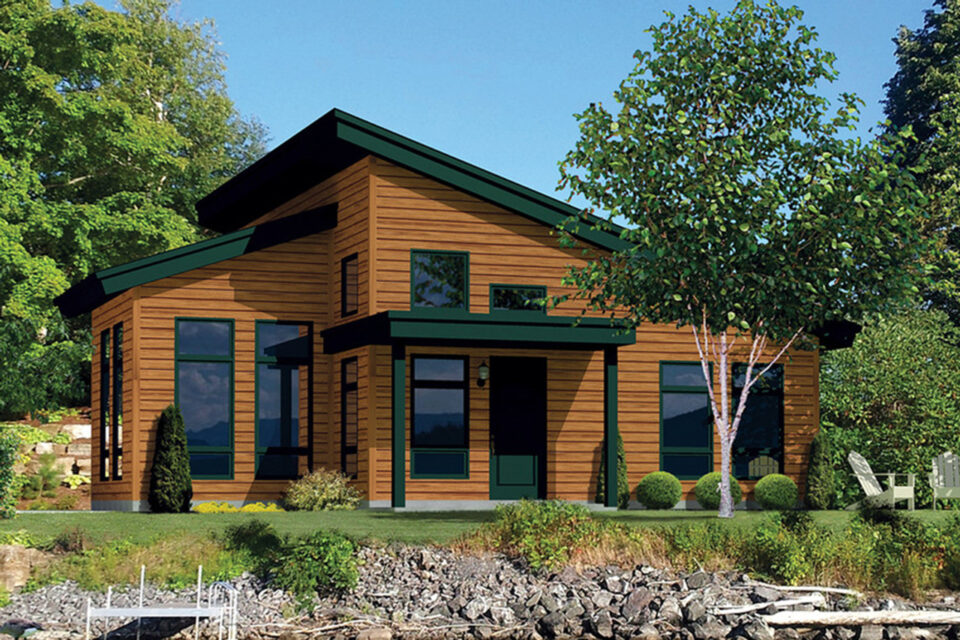The bungalow house style has a fascinating history, making it a favorite among homeowners for decades. Originating from the Bengal region of South Asia, the term “bungalow” was adopted by the British to describe a single-story dwelling with a veranda. The style’s popularity soared in the early 20th century when it became a symbol of the American Arts and Crafts movement, which emphasized craftsmanship, simplicity, and natural materials.
Bungalows typically have low-pitched roofs, wide eaves, and large front porches supported by tapered columns. The interior layout often features an open floor plan, with the living room, dining room, and kitchen flowing into one another. Bungalows were designed to be practical and efficient, with an emphasis on natural light and ventilation.
Over time, the bungalow style has evolved and adapted to various cultures and climates, incorporating elements such as Spanish tile roofs, stucco walls, and tropical landscaping. Today, bungalows continue to be a popular choice for homeowners who value the style’s unique character and versatility.
Historical Roots
The bungalow’s roots can be traced back to the traditional homes of the Bengal region. These homes were designed to be low and sprawling, with large verandas that provided shade and a space for relaxation. The design was practical for the hot and humid climate of the region. When the British colonized India, they were enamored by this architectural style and began to incorporate it into their own homes, both in India and back in Britain.
Characteristics of Bungalow House Style
Bungalows are typically one or one-and-a-half stories tall, with a low-pitched roof and wide eaves. They often feature a large front porch, which serves as an extension of the living space. The interiors of bungalows are cozy and efficient, with an open floor plan that connects the main living areas. Built-in furniture, such as bookcases and benches, is another hallmark of this style.
The use of natural materials, like wood and stone, is prevalent in bungalow design. This gives the homes a rustic and earthy feel, connecting them to the surrounding environment. Large windows are also a standard feature, allowing for plenty of natural light and a connection to the outdoors.
Modern Adaptations
While the traditional bungalow style has its own charm, modern adaptations have added a contemporary twist to this classic design. Today’s bungalows often incorporate sustainable materials and energy-efficient features. Open-concept designs, with spacious kitchens and living areas, cater to the modern family’s needs. Moreover, the integration of smart home technology has made the bungalow a perfect blend of tradition and modernity.
Bungalow vs. Villa: A Comparison
While bungalows and villas may seem similar, there are distinct differences between the two. Villas, which have their origins in ancient Rome, are typically more extensive and more luxurious than bungalows. They often come with expansive grounds and are associated with a sense of grandeur. Bungalows, on the other hand, are more modest and are designed for comfort and practicality.
However, the lines between bungalows and villas are blurring, especially in real estate markets where the terms are used interchangeably. For instance, when looking for villas for sale in Venice FL, one might come across properties that have the characteristics of both bungalows and villas.
In Closing
The bungalow house style is a timeless choice that continues to captivate new homeowners across the globe. Its rich history and distinctive features make it an attractive option for those who appreciate its traditional charm and modern adaptability. Whether you’re drawn to its cozy interiors or its historical roots, the bungalow offers a unique perspective on new home construction.
If you’re considering this style of home and curious to see how it has evolved, especially around Venice, FL, you should visit Vistera of Venice. They have a great collection of new homes on display, and the Neal Communities-Paired Villas are expected to be available by the end of 2023.


